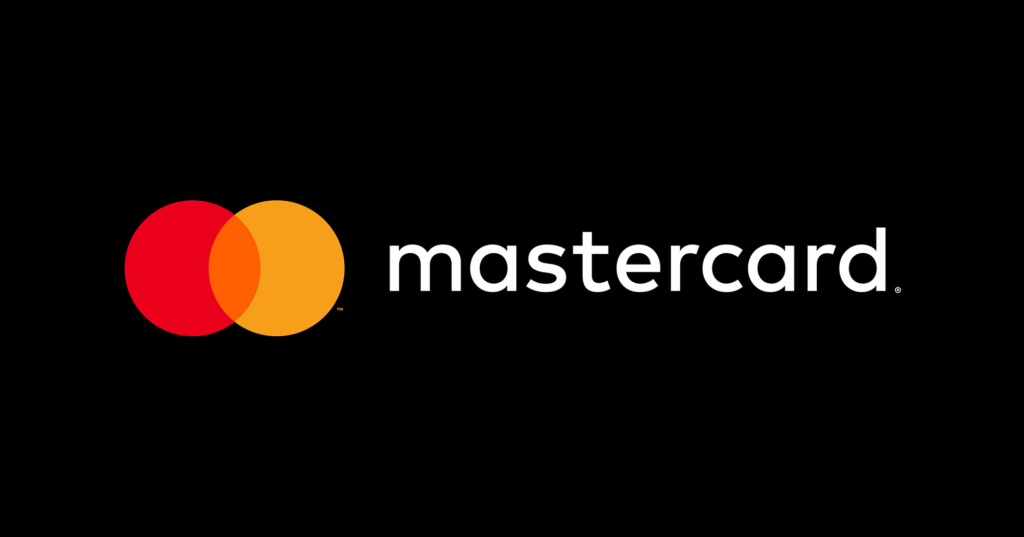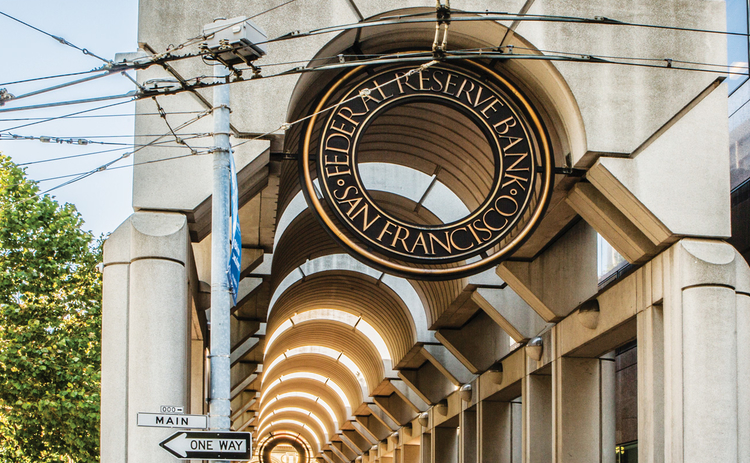Immersve, a Web3 payment protocol, has teamed up with payment system behemoth Mastercard to facilitate cryptocurrency payments.
The companies announced the partnership, using decentralised protocols to facilitate crypto transactions. Locations and businesses that accept Mastercard payments, online and in-person, can support users of the new payment platform.
Immersve and Mastercard’s crypto payment system uses USDC stablecoins and allows users to integrate their Web3 wallets for direct payments.
Immersive also plans to partner with third-party settlement providers to sanction USDC purchases for card holders. This swaps USDC to fiat currencies while leveraging Mastercard’s payment network.
Additionally, card holders can integrate Web3 wallets and DeFi protocols on Immersve applications programme interfaces (APIs).
The news comes after Mastercard furthered ties to the Web3 industry with a cutting-edge accelerator programme. The company’s Start Path programme created a cohort of fintech startups to test new Web3 technologies.
Mastercard and affiliated experts trained, deployed, and facilitated cryptocurrency, payment, and blockchain technologies for the seven selected companies.
The New York State Department of Financial Services (NYDFS) has upgraded its illegal activity detection capabilities.
Its enhancements come amid major efforts to monitor and regulate activities in the cryptocurrency industry.
According to a statement from the organisation, it said that it had upgraded its “new insider trading and market manipulation risk monitoring tools.”
NYDFS superintendent Adrienne Harris explained further,
“This is a significant step in our supervision of the virtual currency industry as it continues to quickly transform and mature. These tools will help us combat financial crime and fraud, hold regulated entities accountable, and further strengthen our national leadership in virtual currency supervision.”
She added the tools would help the regulator “combat financial crime and fraud, hold regulated entities accountable, and further strengthen our national leadership invirtual currency supervision.”
The news comes after the agency stated it had “expedited procurement of additional blockchain analytics technology” to enforce Russian sanctions.
The NYDFS also enforced measures on Paxos Trust, forcing the cryptocurrency firm to stop minting Binance USD stablecoins following investigations.
The developments come after the NYDFS slapped a $100 million USD settlement on Coinbase after it accused the crypto firm of backlogging 100,000 alerts detailing suspicious transactions.
Currently, the organisation is investigating crypto platform Gemini’s Earn lending programme, which it suspected of selling securities.
Coinbase Global posted losses in its fourth quarter (Q4) reports due to mounting pressure from an industry downturn triggered by cryptocurrency platform collapses, it reported on Tuesday.
Coinbase shares nosedived around 86 percent in value last year, and slumped a further 2 percent following the report.
The news comes as numerous cryptocurrency platforms, including FTX, Three Arrows Capital, and Voyager filed for bankruptcy in 2022, sparking a wave of negative investor sentiment on digital assets.
Further issues surrounding cryptocurrencies led to the fall of crypto lending exchange Genesis in January. This continued a mixed trend of market sentiment and a further tightening of cryptocurrency restrictions.
Sam Bankman Fried, the disgraced former chief executive and founder of FTX, currently faces eight counts of financial malfeasance. Charges include wire fraud, conspiracy to commit wire fraud, and many others.
In a letter to shareholders, Coinbase wrote: “As macroeconomic indicators like inflation remained high and interest rates rose throughout the year, crypto market cap declined along with broader equity markets.”
It explained further:
“These weakening market conditions became exacerbated by two idiosyncratic events. The first was the depegging of $LUNA in Q2’22 which contributed to a ~60% crypto market cap decline in that quarter and exposed poor risk management practices in crypto, which ultimately helped drive the credit related bankruptcies of Three Arrows Capital, Voyager, and Celsius.”
It also cited the collapse of FTX in Q4 2022, resulting from fraud, which “helped drive additional credit related bankruptcies.”
The Hong Kong Securities and Futures Commission (SFC) published on Monday its virtual asset trading rules. The government body is seeking comment from public experts on the findings.
According to the document, regulators will offer licencing for cryptocurrency firms and will determine if those receiving them can serve retail investors. It will also outline investor protection measures.
The notice said: “Operators of virtual asset trading platforms which plan to apply for a licence, including pre-existing platforms […], should begin to review and revise their systems and controls to prepare for the new regime. Those which do not plan to apply for a licence should start preparing for an orderly closure of their business in Hong Kong.”
Additional measures will require operators to perform due diligence on cryptocurrencies by monitoring and assessing liquidity over time. It will also determine who owns holdings on the platforms and how the wealth is concentrated.
Crypto operators can only trade tokens for the SFC’s requirements, meeting “eligible large-cap virtual asset posted on designated indices. It also requires smart contracts to ensure security checks.
Comments and Plans for Hong Kong Crypto
Julia Leung, SFC chief executive, said in a statement,
“As has been our philosophy since 2018, our proposed requirements for virtual asset trading platforms include robust measures to protect investors, following the ‘same business, same risks, same rules’ principle. In light of the recent turmoil and the collapse of some leading crypto trading platforms around the world, there is clear consensus among regulators globally for regulation in the virtual asset space to ensure investors are adequately protected and key risks are effectively managed.”
The report concluded that some platforms aimed to offer derivatives, leading to probes on sufficient business models and market demand. This comes after the SFC opened regulated crypto-based derivatives to some investors in January last year.
The organisation also aims to hold further reviews to outline related policies. Consultations will close on 31 March and licencing protocols will enter on 1 June, the report concluded..
The report comes after Hong Kong announced it would introduce further regulations and the development of a potential stablecoin for future use. Hong Kong will also receive Samsung Asset Managment’s Bitcoin-based futures exchange-traded funds (ETF) in the Chinese finance hub.
Bitcoin watchers have seen the cryptocurrency jump to roughly $25,000 after the crypto market capitalisation reached $1.17 trillion, reports showed.
The price of the cryptocurrency king hit $24,500, a 12.4 percent increase from last week. Ethereum, the second-biggest digital currency by market capitalisation, topped $1,689 USD, an 11.7 percent spike from last week.
Additional virtual currencies rose along with BTC, with Solana, Polkadot, and Polygon gaining 20 percent, 19 percent, and 18.5 percent, respectively.
One user stated that BTC could potentially reach $27,000 USD shortly with a candle formation.
Degen Ape Trader said at the time: WIf this red line get smashed. We may see a $btc god candle to 27k area in a short time. Basically no resistance till 27-28k for #btcusdt after 25250.”
Crypto Market Triggers
The news comes after massive fluctuations took place due to US Federal Reserve and Securities and Exchange Commission disruptions in the crypto economy.
According to reports, Bitcoin hovered earlier this month around $23,000 USD after the Fed launched several interest rate hikes to tackle ongoing monetary inflation.
Additional concerns with the SEC lawsuit against cryptocurrency giant Binance, whom the regulatory body accused of selling crypto-related securities. News of the litigation, linked to Paxos-minted Binance USD (BUSD), triggered massive net outflows of roughly $831 million USD at the time.
Japanese FTX users will receive access to withdrawal services for both their cryptocurrency and fiat assets.
In its press release, it stated that it would uphold its pledge to release the funds after Japanese authorities held them under national law. Funds will open “from 12:00 on February 21, 2023,” it said.
「法定通貨の出金および暗号資産の出庫のサービス再開のご案内」を掲載致しました。こちらをご確認ください。https://t.co/Vu5jDnBBb3
— FTX Japan (@FTX_JP) February 20, 2023
The statement informed investors that Liquid Japan would provide withdrawals and other services for FTX Japan. Customers with assets on the platform were required to “confirm the asset balance of their FTX Japan account before using this service, and then open/confirm a Liquid Japan account.”
It added that procedures for transferring to a Liquid Japan account were also required, with eligible customers receiving notifications via email.
Speaking further, FTX Japan stated: “Due to the large number of requests from customers, it may take some time for the withdrawal process to be completed. We will announce the resumption of other FTX Japan services as soon as possible.”
The news comes after FTX Japan blocked services and payments on 8 November, just days before FTX filed for Chapter 11 bankruptcy in the United States. Reports show creditors are preparing to sell off FTX Japan and FTX Europe as part of FTX’s funds recovery operations over the next few months.
In mid-January, FTX lawyers revealed that the disgraced company had recovered around $5 billion USD in funds after a major probe into the company’s assets.
San Francisco’s Federal Reserve Bank has opened a position for a software engineer to build and deploy central bank digital currency (CBDC) infrastructure.
According to an 18 February job posting, the tech hub’s Federal Reserve advertised a “senior application developer” for the digital currency. The job notes that the selected candidate will create and implement systems for CBDC assets.
In the post, it said: “Given the dollar’s important role, Federal Reserve System seeks to further understand the cost and benefits of the potential technologies for central bank digital currencies, and how the system better understand this emerging field.”
The candidate is also expected to improve developed systems and mitigate risks. The job will also pay from $110,300 to $176,300. 46 applicants have applied to the position at the time of writing.
“We are looking for a Sr. Application Developer to implement example systems related to a Central Bank Digital Currency. The software engineer engages directly with management, other developers on the team, development operations teams, and vendors to ensure the Federal Reserve is well-positioned to design, develop, and implement technology to support a CBDC as may be required by the Board of Governors.”
The news comes just weeks after the United Kingdom posted its own job advert in late January for a head of digital currency. Whitehall recruiters for His Majesty’s Treasury aimed to explore the potential for a CBDC capable of diversifying payment options for citizens. The new digital stablecoin could also allow the UK to become a thriving tech hub over the next few years after its implementation.
Bored Ape Yacht Club’s (BAYC) wolf skull logo has reportedly been trademarked without approval or licencing, according to a recent Twitter post.
In a tweet from @Jdotcolombo, BAYC allegedly lifted the artwork from a company’s initial design for illustration tutorials. The firm, Easy Drawing Guides, created the “easy step-by-step drawing tutorial.”
Learn How to Draw a Wolf Skull: Easy Step-by-Step Drawing Tutorial for Kids and Beginners. #Wolf #Skull #drawingtutorial #easydrawing. See the full tutorial at https://t.co/ZFghJCaRwv . pic.twitter.com/Ck0Xys0WfW
— Easy Drawing Guides (@easydrawinguide) April 5, 2021
The BAYC Kennel Club launched its collection of non-fungible tokens (NFTs) in June 2021 and trademarked the design as its intellectual property (IP), triggering backlash from Easy Drawing Guides.
Thanks for bringing this up @Jdotcolombo. @yugalabs doesn't have a license to the wolf skull drawing. The intellectual property rights for the drawing belong to Easy Drawing Guides as it's our original drawing and protected by our Terms and Conditions.
— Easy Drawing Guides (@easydrawinguide) February 17, 2023
In a tweet, the company said: “Thanks for bringing this up @Jdotcolombo. @yugalabs doesn’t have a license to the wolf skull drawing. The intellectual property rights for the drawing belong to Easy Drawing Guides as it’s our original drawing and protected by our Terms and Conditions.”
Saw the claims today about the BAKC logo. This was news to us and we're still investigating the situation. Have reached out to the freelancer we hired for that design and Easy Drawing Guides. We’ll be changing the logo and updating it on our site / ask marketplaces to change as… https://t.co/OwtflDXehz
— Garga.eth (Greg Solano) (@CryptoGarga) February 18, 2023
Shortly after the incident, Yuga Labs co-founder Greg Solano tweeted that Yuga Labs had commissioned a freelancer for the design.
The exec added that he had reached out to the freelancer and Easy Drawing Tutorials to investigate the matter further while also promising to remove the logo in due course.
Bored Ape Yacht Club’s (BAYC) wolf skull logo has reportedly been trademarked without approval or licencing, according to a recent Twitter post.
In a tweet from @Jdotcolombo, BAYC allegedly lifted the artwork from a company’s initial design for illustration tutorials. The firm, Easy Drawing Guides, created the “easy step-by-step drawing tutorial.”
Learn How to Draw a Wolf Skull: Easy Step-by-Step Drawing Tutorial for Kids and Beginners. #Wolf #Skull #drawingtutorial #easydrawing. See the full tutorial at https://t.co/ZFghJCaRwv . pic.twitter.com/Ck0Xys0WfW
— Easy Drawing Guides (@easydrawinguide) April 5, 2021
The BAYC Kennel Club launched its collection of non-fungible tokens (NFTs) in June 2021 and trademarked the design as its intellectual property (IP), triggering backlash from Easy Drawing Guides.
In a tweet, the company said: “Thanks for bringing this up @Jdotcolombo. @yugalabs doesn’t have a license to the wolf skull drawing. The intellectual property rights for the drawing belong to Easy Drawing Guides as it’s our original drawing and protected by our Terms and Conditions.”
Thanks for bringing this up @Jdotcolombo. @yugalabs doesn't have a license to the wolf skull drawing. The intellectual property rights for the drawing belong to Easy Drawing Guides as it's our original drawing and protected by our Terms and Conditions.
— Easy Drawing Guides (@easydrawinguide) February 17, 2023
On the one hand, BAYC supporters believe that no intellectual property was breached in using the logo; however, most agree that Easy Drawing Guides is entitled to some serious compensation.
Saw the claims today about the BAKC logo. This was news to us and we're still investigating the situation. Have reached out to the freelancer we hired for that design and Easy Drawing Guides. We’ll be changing the logo and updating it on our site / ask marketplaces to change as… https://t.co/OwtflDXehz
— Garga.eth (Greg Solano) (@CryptoGarga) February 18, 2023
Shortly after the incident, Yuga Labs co-founder Greg Solano tweeted that Yuga Labs had commissioned a freelancer for the design.
The exec added that he had reached out to the freelancer and Easy Drawing Tutorials to investigate the matter further while also promising to remove the logo in due course.
Helium Network plans to migrate its platform to the Solana blockchain on 27 March, it has announced.
The measures aim to boost reliability and to upscale the technologies, it said in a 17 February blog post. The migration will take 24 hours to complete and temporarily halt Helium’s blockchains.
📢 ATTENTION!
— Helium🎈 (@helium) February 17, 2023
The Helium Network is officially migrating to @solana on March 27th! Are you ready?
Ensure that you've migrated to the Helium Wallet app for a smooth transition. Keep Hotspots active and online to receive IOT tokens.
More in this thread🧵👇 https://t.co/rzk2xcBEJ0
The process will not affect Helium’s proof-of-coverage and data transfer activities.
Helium’s tech teams added the migration marked a “new era for the Helium Network, enabling it to achiev greater scale and truly become a network of networks.”
It continued that the Helium community had onboarded roughly 1 million hotspots, with growing commercial demand set for future targets.
👛 After the migration, the Helium Wallet app will become a @solana wallet, allowing you to access all of your Helium tokens and Hotspots on the Solana blockchain. Your existing private key, or secret words, can be used to access your Helium assets on Solana.
— Helium🎈 (@helium) February 17, 2023
Helium explained further: “With the ability to power thousands of transactions per second, combined with its massive ecosystem of developers, applications, and integrations, Solana has the speed and scale necessary to take on the blockchain responsibility while the Helium core-developers and community can focus on building wireless protocols and enabling utility on these networks.”
Concluding, it wrote that HNT would becomem “natively compatible with other platforms within Solana’s ecosystem,” namely for HNT, MOBILE, and IOT token holders.
Regarding all digital assets, the firm would also snapshot the blockchain following the migration process to Solana. It would also mint all Hotspots as non-fungible tokens (NFTs).
The news comes after Nova Labs, the company behind Helium, announced in September last year it would partner with US telecom T-Mobile. The joint effort would open a mobile service for subscribers to earn cryptocurrency bonuses and rewards by sharing coverage data to improve the network.
GBBC Digital Finance partnered with the International Organisation of Securities Commissions (IOSCO) on Thursday, becoming an affiliate member of the association.
It joins as the 70th member of the group’s IOSCO Affiliate Members Consultative Committee. The latter offers insights into the IOSCO’s policy and standards
We're very proud to announce that GBBC Digital Finance has joined the International Organization of Securities Commissions (IOSCO) as an Affiliate Member.
— GBBC Digital Finance (@GlobalDigitalFi) February 16, 2023
Read our full press release here: https://t.co/KxOI1EJW9y pic.twitter.com/G8DrVBMUrj
The news comes as the organisation published its Crypto-Assets Roadmap in July last year.
Lawrence Wintermeyer, CBBC Digital Finance chairman, said at the time that the addition was an “important milestone” for his organisation, its members, and the “wider digital finance industry.”
Emma Joyce, CEO of GBBC Digital Finance, added: “We are proud to be an affiliate member of such an esteemed membership organization. Our priority at GDF in 2023 is engagement with regulators and [policymakers] and jointly examining how we might construct a DeFI education and engagement platform.
The news comes after the organisation published a DeFi research paper in March last year. Researchers noted several risks to DeFi systems and later partnered with the Bank for International Settlements to tackle the issues.
As a result, the joint effort outlined potential solutions for safeguarding stablecoin technologies.
The IOSCO creates and backs global securities standards for the finance industry, hosting 35 national securities regulators across 200 partner organisations.












